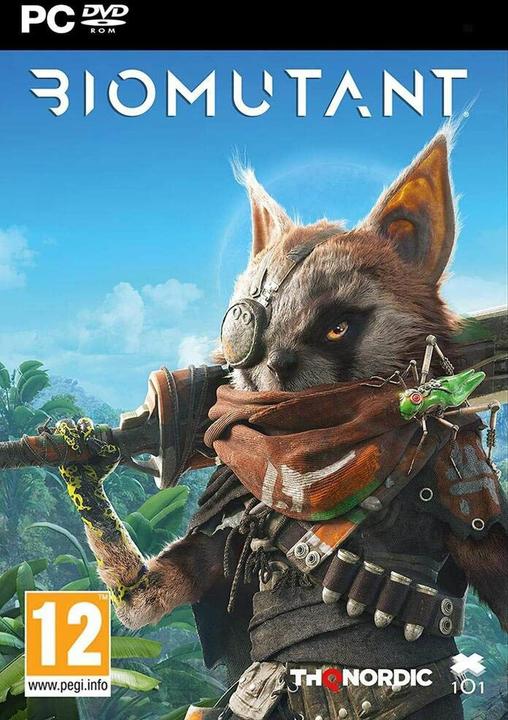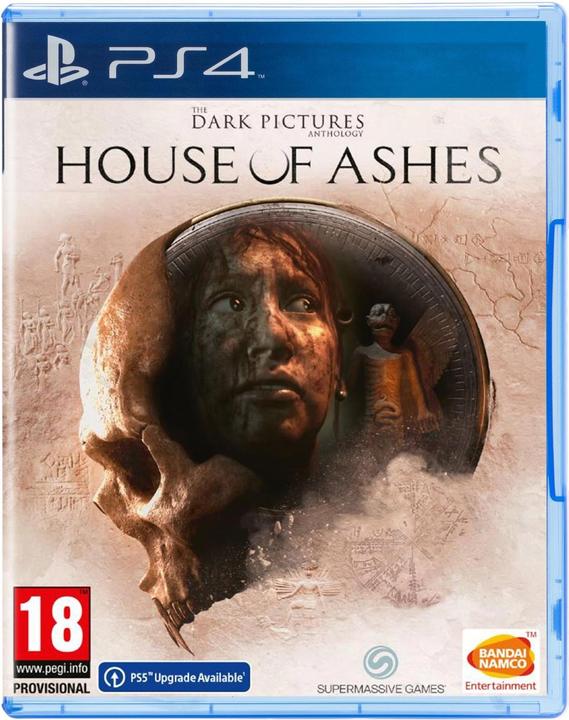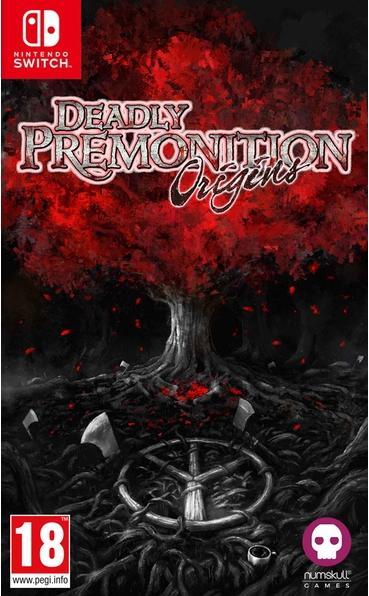

Good ideas, poorly implemented: these features deserved better
While the idea is brilliant, the rest is flawed: some video games debut truly creative concepts, but they just never really catch on. Join us as we look back at 10 strong features in video games that lacked a decent implementation or were completely unjustly forgotten in the stream of time. It’s high time someone took on these ideas and finally gave them the exposure they deserved from the start.
This is an article from our content partner «PC Games». Here’s the original article.
Some games aren’t necessarily remembered for how good they were, but how good they could have been. This becomes especially annoying when brilliant ideas aren’t implemented decently or are neglected in favour of another feature.
Sometimes, however, a development team was ahead of its time and could only hint at the untapped potential still lying dormant in a fresh concept. All the worse when such ideas are then forgotten by time. That’s why we’re taking a special look at 10 games with features that could’ve been used more. German video below.
1. The GTA series: a gang war for Los Santos
Grand Theft Auto San Andreas established many mechanics that would become standard in later parts of the GTA series. Characters use their cell phones, the map offers clothing and tattoo stores, and protagonist CJ can put levels into skills such as shooting or driving. These elements were picked up and developed in later titles, but some features also fell by the wayside over time. Such as the gang war.
In GTA: San Andreas, the first time you’re given the task of taking over territories belonging to hostile gangs takes place towards the end of Act 1. By recruiting Grove Street followers and going to war with them against other clans and groups, you expand your sphere of influence. Towards the end of the game, when protagonist Carl returns to his old hood, we can once again participate in the gang war and finally take control of Los Santos. To unlock the last mission, you even need to conquer part of the entire map.
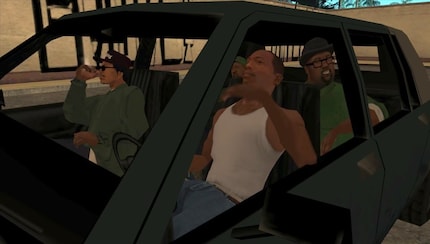
That’s a great concept in and of itself, and very satisfying given a storyline where you were cheated out of all of your initial successes. In the end, however, the potential of this feature, like many ideas in GTA: San Andreas, isn’t fully exploited. Partially because battles over street sections are often samey, and the whole affair isn’t staged very dramatically. Also, you never really build a relationship with the other gangs. With the exception of Grove Street’s arch-enemies, the Ballas, no gang has any real prominence in the story. And even these hoodlums dressed in purple lack strong personalities.
Looking at the final battles in Rockstar’s sophomore brawler Canis Canem Edit/Bully, released two years later, one notices that the studio definitely made progress, at least in staging various hostile groups. However, this only made a comeback in later instalments, such as in the GTA 4 DLCs The Lost and the Damned and The Ballad of Gay Tony. There’s plenty of room to bring the feature back in an expanded and improved form, using a large-scale gang war with charismatic leaders, diplomacy, rivalries and strategic moves for an exciting gangster story.

2. The Movies: a comprehensive movie editor
The Movies is one of those titles where the individual parts are stronger than the big picture. Half management Sim, half creative sandbox, The Movies puts you in the role of a movie studio boss. You create departments for script development and film technology, hire staff for all areas and try to make a name for yourself in the ruthless hellscape that is Hollywood.
By default, you start in the 1920s, progressing from the silent film era through to modern blockbusters. The more the story progresses, the more options there are for sets, costumes and filming techniques. Significant historical events such as War and Peace or the Great Depression influence which film genres are in particular demand at the moment.
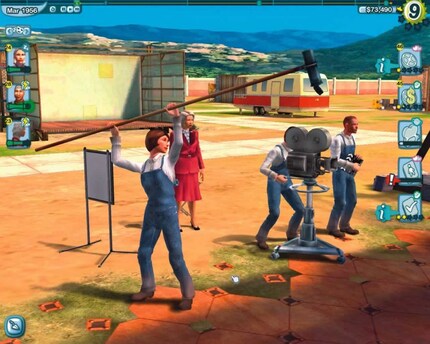
There’s also a kind of Moviemaker, a creative tool with which you can create your own short films. Individual elements work well on their own, and it’s a ton of fun to create scenes and play around with whimsical sound effects and silly costumes. However, the high level of personnel micromanagement and the fact that your own creations are usually labelled as trash by the AI, even if you have undoubtedly created a masterpiece, are annoying.
Nevertheless, The Movies is a wonderful gem that’s unfortunately hardly playable or even available on modern systems. The implementation of The Movies wasn’t really bad either, but the title would still benefit greatly from a sequel or a complete remake. Individual design weaknesses could be fixed and the respective features expanded with elements such as the implementation of workshop or mod content, an improved AI and a more comfortable interface.
3. Blade Runner: the role of a firearm
The adventure game complementing Ridley Scott’s sci-fi milestone was certainly no flop in 1997, selling a million copies, but it’s still more of a cult game than a universally acclaimed classic today. At the same time, many aspects of the PC game were absolutely revolutionary. For example, there were random developments and revelations within the story that were a bit different for each playthrough.
Blade Runner is primarily a detective game in which you collect clues, interrogate people and analyse data. The gameplay mechanics are numerous, and there are different ways to solve individual mysteries. A game full of fantastic ideas, which are sometimes more, sometimes less effective in individual playthroughs. From today’s perspective, it’s obvious that designer Louis J. Castle and his team were ahead of their time.
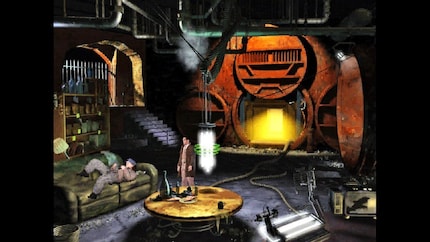
Although state-of-the-art in terms of visuals, sound and game design at the time, the game is clearly overambitious, making many elements feel a bit half-baked. Just look at the scanning of video footage, the often invisible requirements for triggering story triggers, or the limited functionality of various items that you can buy in the course of the game.
One feature that we love, however, is the effect that drawing or holstering your service weapon can have on various scenes. For example, you can pull out your gun in an interrogation if you get nowhere by talking. This can help in some cases to put the necessary pressure on suspects, but also escalates the situation and can even lead to a premature Game Over.
Likewise, during action scenes, you can put your gun away and try to bring about a diplomatic solution. Using a weapon involves great risk and has an extreme impact on how an encounter unfolds. The fact that the game doesn’t take this decision away from you, or that you’re made aware of the option by a prompt, puts all the pressure of the decision onto you.
You have to properly assess any situation and the danger it poses, weighing out whether using a weapon is just too risky or indeed the last resort.
Even the decision of what ammunition to put in your gun can have an effect. So sometimes it might be better to just hurt a character and then make an arrest rather than just shoot them from the top. Given that modern games often predefine when you have to reach for a weapon, losing a lot of its menace in the process, we’d like to see a revival of the feature. Maybe this will be heralded with the release of the "Enhanced Edition".
4. Biomutant: the consequences of good and evil
We could have filled our whole list with the next game. Old Biomutant truly is an incredibly ambitious project with really good ideas. If it hadn’t been for scheduling problems during development, the fluffy raccoon would certainly have convinced with its mechanics. But the finished implementation unfortunately left much to be desired.
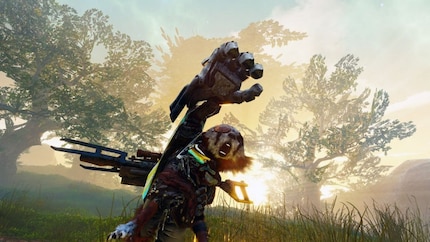
The story definitely had potential as well as a serious and important hook. But the extremely annoying narrative style and childish gibberish babble of the characters made the open-world RPG completely unplayable for many.
The combat system also offered entertainment, variety and fun in itself. At least if you didn’t use the far too powerful ranged weapons to your advantage. Otherwise melee bats and special attacks became mostly worthless. The iron sights allowed you to keep most enemies at a distance and plink down their health bar. This worked almost every time.
Biomutant’s most exciting concept also reveals the title’s biggest flaws. Six tribes are located throughout the game world. No matter whether you opt for the good or evil path, the other tribes need to be brought to your side.
First, you’ll need to take three outposts to reach a fortress containing your enemy, Sifu. Afterwards, the tribal leader can be persuaded to join by combat or diplomacy. However, if you’ve put enough points into speech, you should have no problems convincing him.
Once you have three of the six tribes on your side, the game draws a line, the remaining tribes surrender and everyone happily fights together. Suddenly it doesn’t matter that everyone’s been pursuing different goals up to this point.
Even more so, Biomutant doesn’t offer any noteworthy reasons to choose the dark side. Why fight the other tribes when they can be of use as your adventure progresses? Of course, for those who just want to watch the world burn, it’s still nice. But for the rest of us, this option remains a cheap gimmick.
5. Vampire: the Masquerade – Bloodlines: different classes with entirely different gameplay experiences
The cult classic is pretty much the definition of a diamond in the rough. Due to miscalculations during production and the resulting insolvency of developer Troika Games, the game was released in 2004 unfinished and filled with bugs, only to be rescued in the following years by a small but enthusiastic fan community with unofficial patches and add-ons. Only playable in its original state with a lot of luck and patience, Bloodlines had so many good ideas that the community simply refused to let the title die.
Thus, Bloodlines has a fairly versatile role-playing system, in which your choice of vampire clan and the points you invest in individual abilities have an effect on how you can best solve the diverse quests. This isn’t a unique selling point, of course, but many situations can actually be handled completely differently by a different character. Take the following example: unlike all other clans, the Nosferatu have a monstrous appearance and are therefore not allowed to come into contact with humans. Requiring you to move through the sewers as a Nosferatu and reach your destinations unseen.
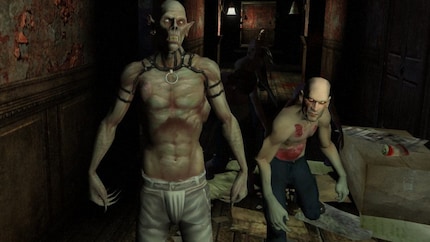
The Malkavians, on the other hand, are visually human enough, but are otherwise pretty crazy. Their response options are completely different from those of other playable characters in their wording, yet they see things that other clans don’t and can even have conversations with items, for example.
Bloodlines’ world design, in which various L.A. neighbourhoods act as levels and access to more and more buildings is gradually unlocked, is simple and effective. This leads to individual areas being more memorable than any large open-world role-playing game. Unfortunately, final areas aren’t as elaborate as the opening, and the story concludes in an abrupt anticlimax. To make matters worse, the initially very open quest design allowing for fights, stealth, or various peaceful approaches, becomes a lot narrower towards the end. Many battles can no longer be avoided, and your freedom to make decisions is increasingly limited.
True, the audiovisual presentation is unique and quite coherent, but in some moments – especially when it comes to the game’s portrayal of women – the ravages of time are clearly evident.
6. Watch Dogs Legion: being able to play absolutely anyone, a dream come true
If there’s one thing we remember most from the Watch Dogs series, it’s the fun ways to invade the privacy of NPCs. The profiler feature allows you to learn a random fact from the life of any passerby.
In the moment, this has no direct impact on gameplay. But it’s definitely more fun to drain someone’s account if you’ve learned that they donate to far-right organisations beforehand! After a more or less identical Profiler in Watch Dogs 2, the third instalment, Legion, wanted to take this concept of NPCs with backstories to the next level.
In a dystopian London, not only does every passerby have a set daily routine, but also a short biography and relationships that exist in the game.
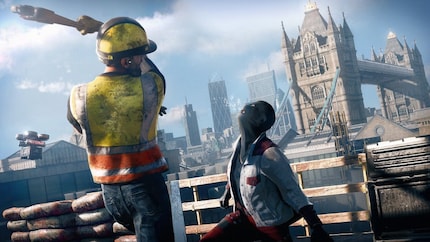
And the best part? You can recruit and control any of them! A football hooligan with a megaphone, that human statue in the park, some soldier who just shot at us, and, of course, the handbag granny. If that doesn’t sound like endless possibilities!
However, because Ubisoft designed the game pretty much the same as all of its other open-world titles, the elaborate system quickly reaches its limits. Ultimately, Legion is about just one thing: infiltrating enemy outposts, eliminating opponents and collecting McGuffins.
As hand-to-hand combat feels limp and awkward, you’ll quickly leave the defenceless granny and hooligan with the baseball bat behind. The construction worker’s cargo drone is for naught, as you can summon similar flying machines with any other character at a drone station.
And given you can easily hide from the secret police anyway, no one needs the statue artist.
What about the storyline? It’s the weakest in the series, lacking a main character and peppered with flat conversations between randomly generated characters. Instead of NPCs with interesting stories, you eventually only recruit the most efficient ones due to the repetitive tasks.
In other words, that one with the silenced firearm. Consequently, a technically impressive feature becomes an accessory to an otherwise very average open-world adventure.
7. Batman: Arkham Knight: the Batmobile
Many still consider Arkham City as the best Batman game of all time. Rocksteady’s masterpiece actually left only one wish unfulfilled: getting to drive the legendary Batmobile yourself, racing through Gotham City’s streets. Four years later, the developers wanted to fulfil exactly this wish in Batman: Arkham Knight, staging a grand finale in which the cult vehicle plays an important role for the first time. And at first glance, Rocksteady did a lot right: the Batmobile wasn’t only excellently added, but also deeply anchored in gameplay.
For example, the vehicle was used in several environmental puzzles. You had to pull objects around using a grappling hook, tear down barriers or pull the car up walls – the developers definitely put a lot of thought into it, the Batmobile didn’t just feel like a gimmick.
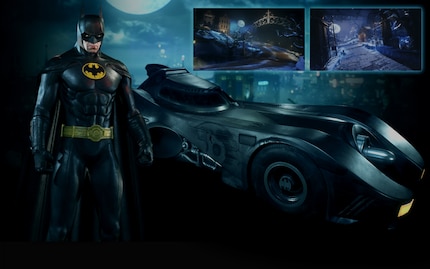
But as beautiful as it all was, enthusiasm quickly waned. For example, when you realised that the beautiful city backdrop wasn’t nearly as suitable for speeding around as you’d initially thought. Many of Gotham’s alleys were narrow and dark, so you often got stuck somewhere, stressing you out especially in the chases. Added to that were slightly spongy controls and a camera that often stuck too close to the vehicle.
The fact that you had to use the car quite often also pissed off some fans. This was especially true for the Riddler challenges held under the streets of Gotham. You had to master quite absurd race tracks against the clock, which hardly forgave driving errors, practically necessitating learning by heart. In the old Batman games, there was simply no such thing.
But all of this would really still have been okay if it weren’t for the second vehicle mode: at the push of a button, the Batmobile transformed into a kind of tank, including fast-dodging movement, which just felt weird. In this battle setting, you then had to blow away masses of unmanned tanks and be careful not to get hit yourself. This just didn’t fit with Batman at all, also clashing heavily with the previous games, which relied more on stealth, deliberate action and Metroidvania elements. The tank battles were meant to underline how serious the situation in Gotham City was. After all, Batman had to fight an entire high-tech army – but in the end, these battle sections felt foreign. In the end, Arkham Knight was still a good action adventure, but it couldn’t match the lauded Arkham City – and that’s unfortunately also thanks to the Batmobile.
8. The Dark Pictures Anthology: split-path multiplayer
Supermassive Games’ Dark Pictures Anthology is built on the same gameplay as the studio’s big breakthrough title, Until Dawn: the story offers a mishmash of different horror scenarios and clichés, with more than one playable character and decisions that could lead to their demise. However, the Dark Pictures Anthology’s clever innovation allowed you to control two characters simultaneously in co-op mode.
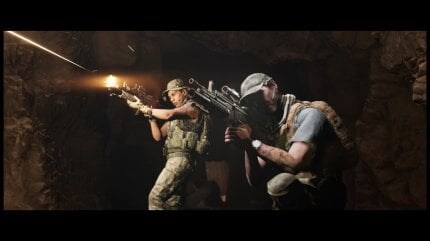
Experiencing stories based on B-movies and horror classics together could be a lot of fun in theory. Unfortunately, however, the system wasn’t elaborate enough. Even in single player, some playthroughs were marred by the fact that a lack of dead characters was very poorly thought out. Important information was missing, and some events hardly made sense any more.
The last spin-off "House of Ashes" (which we tested) is especially affected by this. Due to the additional play styles of multiplayer mode, it’s considerably more difficult to stringently tell the story. A task that Supermassive unfortunately didn’t do justice to at all. Some scenes seem wrongly arranged, characters disappear arbitrarily and reappear elsewhere in the story, and dialogues and relationships between characters don’t seem believable.
When Dark Pictures does work as promised, you can really have fun with it. Which is why we’d be elated if a studio could take on the basic idea behind it without neglecting the technical implementation.
9. WWE2K series: WWE Universe Mode
WWE Universe mode allows you to take over the booking of a gigantic wrestling franchise. You plan feuds, title fights and big events, and you can customise which roster each character belongs to and how the audience reacts to them. The dream of every wrestling fan, in theory. However, the less than spectacular presentation and a lack of variety ensure that the game mode is nowhere near as impressive as it could be.

In truth, rivalries only really exist between individual wrestlers and tag teams. Rivalries between three or more people aren’t possible. Neither is the formation of really large factions engaging in gang warfare.
Moreover, despite different story frameworks, feuds often play out similarly. Two wrestlers compete against each other week after week until the end of their allotted rivalry. Mostly in similar match types, and without much action before, during or after the confrontation. The dynamics of a real wrestling storyline, the trappings, the backstage encounters, the sudden and often delightfully silly twists and special gimmicks – none of this is captured by the simulation. When a wrestler turns away from the audience and goes from celebrated babyface to feared heel, it’s sold on TV as a shocking moment that turns everything upside down. In the WWE2K games, we see one of what feels like two routine cutscenes.
The last real instalment in the series, WWE2K19, did contain good attempts to capture the theatrical characters from TV. Especially during promos between superstars, battles of wit in the ring, the game really shines.
However, the personalities of individual performers still don’t come across as authentic. With a greater focus on what happens away from the ring and special storylines tailored to respective characters, something good could emerge. And following the disastrous WWE2K20, fans expect nothing less than a revolution in the series anyway.
10. Deadly Premonition: basically everything
Like Vampire the Masquerade, Deadly Premonition could be described as a diamond in the rough. However, this would be an understatement and a half. The detective adventure is akin to a wolf in donkey’s clothing. Ugly visuals, buggy gameplay, a PC port that isn’t even playable on many systems without fixes and mods, and design decisions that seem to have been made on a "why not" basis.
Despite a cult status given mainly for its story and characters, actually playing Deadly Premonition is often a frustrating experience. The combat system was allegedly only implemented as a concession to the studio, suffering from spongy controls, poor camera work and a lack of variety.
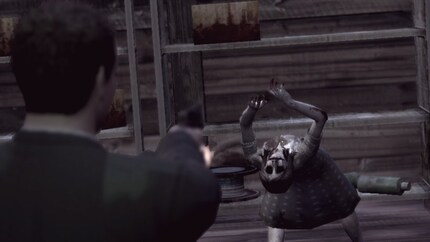
One of the game’s best features, the living open world dotted with inhabitants following a set daily and weekly cycle, is ugly to look at and a real pain to travel through. Simultaneously, the Greenvale area has a lot to offer aside from the main quest. Side missions and events are pretty hidden, though, and you’re not exactly told when a task will be available. Finding your way around is made difficult by the fact that the map has to be opened via the menu and is zoomed in far too close.
On longer trips, you can also run out of gas, having to drive to the gas station for a refill. But while the in-game cars don’t have infinite gasoline, they do appear to have an infinite number of gears. You can hear protagonist York shifting gears every few metres, even when driving at a constant speed, which can really get on your nerves after a short while. While there are opportunities to have interesting soliloquies with York’s alter ego Zack during the ride, these also wear out relatively quickly if you’re on the road a lot.
The side quests themselves consist of small puzzles, combat passages and fetch quests and, like the rest of the game, are only carried by curious characters and stories. There isn’t much variety in terms of gameplay here either.
The many mechanics in Deadly Premonition don’t seem particularly well thought out, but they also give the title a certain uniqueness.
For example, the fact that the main character has to be fed, washed, shaved and put to bed for bonus points would certainly have been eliminated in a AAA title before release. And the opportunity to go fishing would probably not have existed either. After all, from a purely objective point of view, this is absolutely not essential for the rest of gameplay. But that’s exactly where the personal charm lies. Nevertheless, we’d like it if the next title by game director Hidetaka Suehiro aka Swery 65 were also playable for a change.
PC games: cutting-edge news, videos, previews and critical reviews, thoroughly researched reports and handy tips on everything to do with PC games, console games and PC hardware.
Interesting facts about products, behind-the-scenes looks at manufacturers and deep-dives on interesting people.
Show allThese articles might also interest you

Background information
Really, Pokémon’s just getting worse? You couldn’t be further from the truth!
by Cassie Mammone

Background information
GTA VI trailer analysis: the 43 biggest revelations about Rockstar’s blockbuster
by Domagoj Belancic

Background information
Icons of the games industry: Todd Howard - the man behind The Elder Scrolls, Fallout and Starfield
by PC Games

